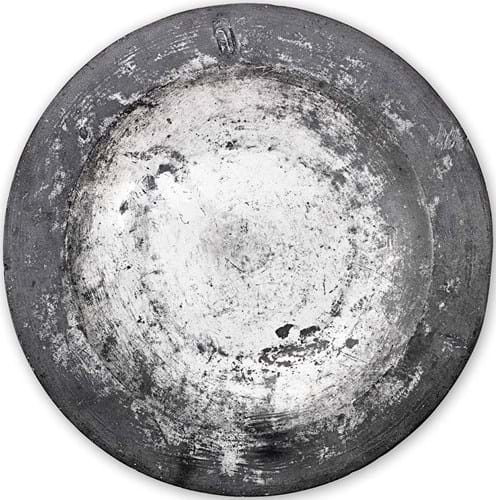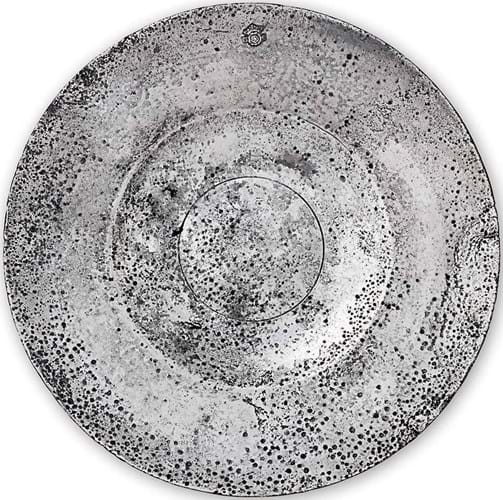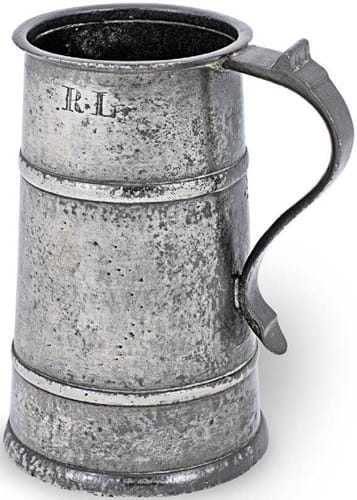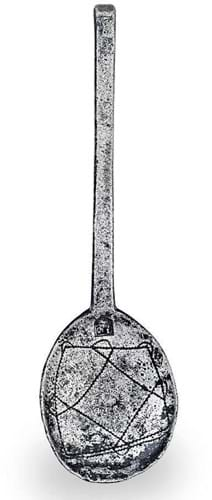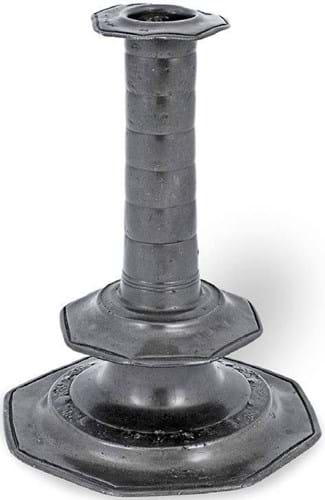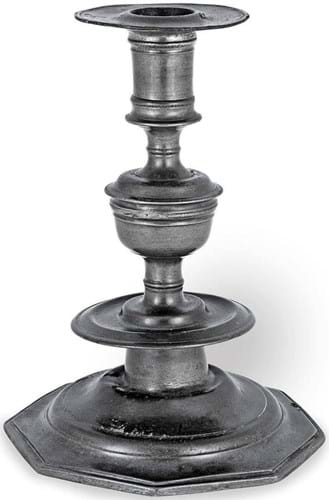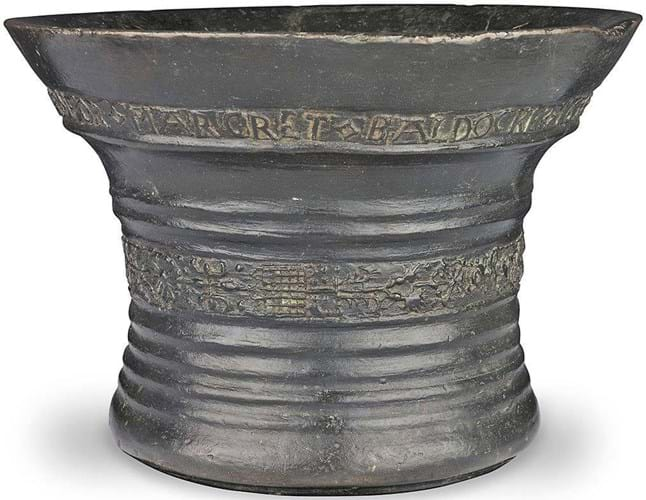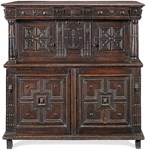Given the emphasis on condition, colour and patination (things not always ascertained from catalogue photos), oak furniture and pewter could scarcely be considered ideal ‘click and collect’ merchandise.
However, the Oak Interior sale held – without a public view – at Bonhams Oxford (27.5/25% buyer’s premium) on January 20-21 performed with aplomb. Close to 700 lots achieved a total of £670,000 with a selling rate of 82%.
Bonhams oak specialist David Houlston said the sale benefited from reputation, and some of the mini-revival for traditional antiques that auctions in the Covid-19 era have often enjoyed.
“We have many established clients and many international buyers who can’t ever view our sales. However, there have been so many successful sales held during lockdown conditions that we had every indication that [the January 4 national lockdown] wasn’t going to be an issue.
“Not a single vendor was reticent about the sale going ahead. We had more than 1000 requests for extra images but we got there in the end.”
British metalwork buyer
The opening 41 lots were pewter hollow and sadwares – 27 of them from the collection of Fred Hess, a member of the Pewter Collectors’ Club of America who has bought British metalwork for many years.
Sent from outside the EU for sale, these lots were subject to 5% import duty on the hammer price in addition to Bonhams’ buyer’s premium of 27.5% on the first £10,000 and 25% thereafter. All were well-received.
“I was very pleased to find the market so buoyant,” said Houlston. “It’s very much a collectors’ market – you are dealing with private clients with very little trade input.”
Sold at £3500 (estimate £2000- 3000) was a 10in (25cm) dish, c.1500, from the famous hoard excavated in 1899 during building work at Guy’s Hospital in London. Of the 20 examples recorded (two more were found near Hampton Court in 1978), only six remain in private hands.
Although with various touchmarks (this one possibly for William Husthwaite), all share an engraved crowned feather to the rim that suggests a link with Prince Arthur, eldest son of Henry VII who died in 1502, or (as more recently argued) the coronation of Henry VIII in 1509.
The finely preserved example in the Little collection made £12,000.
Also sold at £3500 was an 8in (22cm) broad rim plate from the so-called Pewter Wreck: the remains of a mid 16th century ship and its cargo of European trade goods found by professional treasure hunters off the coast of Punta Cana on the island of Hispaniola. The discovery in 2011 was followed in 2013 by the sale of a huge group of Tudor pewter tablewares at Doncaster auction house Wilkinson’s.
Like a third of the Punta Cana finds, this plate carried the mark for Alderman Sir Thomas Curtis, the most important London pewterer of the 16th century whose mark also appears on much of the pewter from Henry VIII’s flagship, the Mary Rose.
Angell creation
The term ‘sadware’ derives from an Old English word meaning solid. ‘Hollowwares’ references pieces such as beakers, tankards and flagons. Some good examples were offered here including (from Hess) a William and Mary two-banded tavern pot, c.1690, with the ownership initials GL and RL and a touchmark attributed to Philemon Angell, (fl.1684-1712). It made £3500.
Pewter spoons were much easier to make and cheap to buy but the survival rate of a once ubiquitous form has been low.
The Charles II slip-top spoon with a naive geometric design in this sale is thought to be the only known wrigglework pewter spoon.
Dating to c.1660, it has the stamped maker’s mark of ID. Once owned by Peter Hornsby (author of Pewter of the Western World 1600-1850 and a former ATG columnist) and last sold as part of the David Little collection at Christie’s in 2007 for £1200, it was offered here with a guide of £700-1000 and made £1700.
Candlestick trio
Hess contributed two of the three Charles II pewter candlesticks in the sale, including an unmarked stick of c.1680 with a ribbed pillar stem, octagonal drip tray and trumpet base sold at £3800.
However, it was the third example, from an old UK collection, that proved the stellar entry.
This model from c.1675 has an octagonal-shaped trumpet base, a baluster-knop stem, circular drip tray and stands 9in (22cm) high.
It has the maker’s mark of SB that may refer to Samuel Booth, York (fl.1671-79). A virtually identical pair of candlesticks by the maker are in The Worshipful Company of Pewterers collection.
Another pictured by Jan Gadd in Pewter Candlesticks (2004) – formerly owned by the late London dealer Richard Mundey and now in the Alex Neish collection – has the touchmark IB, while the excavated example in Little collection sold for £13,000 had the initials TM.
All of the former are missing one key element: the detachable broad-rimmed sconce. In an era when candles were still made from tallow (beef or mutton fat), this first level of defence against drips was a necessary feature. The survival of the sconce to this example also added an element of symmetry and proportion to the design.
A much-admired piece, it was estimated at £6000-8000 but sold at £16,000 to a UK collector. A strong price, but “the best of the best of pewter candlesticks”, said Houlston.
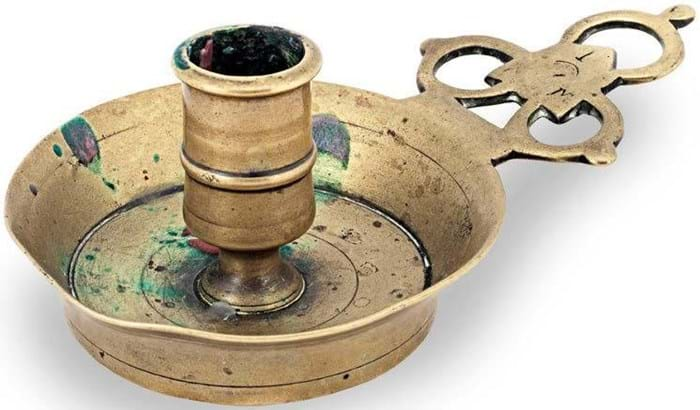
Brass chamberstick with porringer-type handle – £2200 at Bonhams.
A rare English brass chamberstick from the same period, c.1700, also doubled hopes in taking £2200. A few of these are known with porringer-type handles. This example bore the initials WMT and a circular maker’s mark associated with other late 17th century domestic brass wares such as skimmers, ladles and slices.
Renowned mortar
Seldom do we know more about a piece of early English metalwork than can be gleaned from a 13in (32cm) leaded bronze mortar cast with bands of flowers and the dated inscription John Palmar made mee for Margaret Baldocke 1638.
Mortars cast with a woman’s full name are rare. Only three are listed in Michael Finlay’s English Decorated Bronze Mortars & their Makers (2010).
Baldocke, the daughter of a tailor in Canterbury, married at least three times. This mortar was probably made shortly after the death of her second husband Robert and after she assumed control of the family business.
Palmar worked first in Gloucestershire from c.1621 and then in Canterbury from c.1636-56.
In 1887, when it was first recorded by antiquarian JCL Stahlschmidt in The Church Bells of Kent, this mortar was in a grocer’s shop in Canterbury.
It has recently appeared at auction three times: at Christie’s in 2003 (£2800), at Bonhams in 2015 as part of the Yelford Manor collection (£4000) and again in October last year when it went unsold at £3000- 5000). This time out it took £4800 (estimate £2000-3000).


